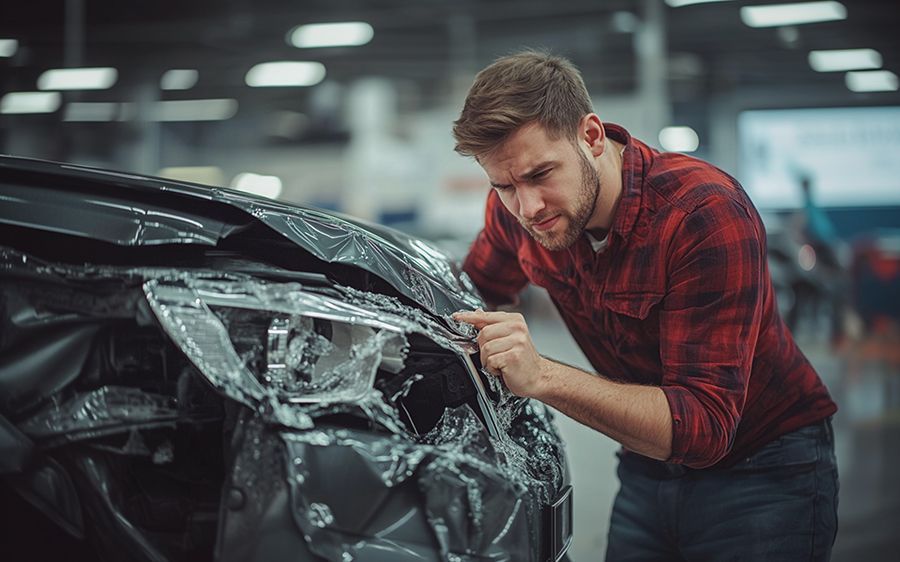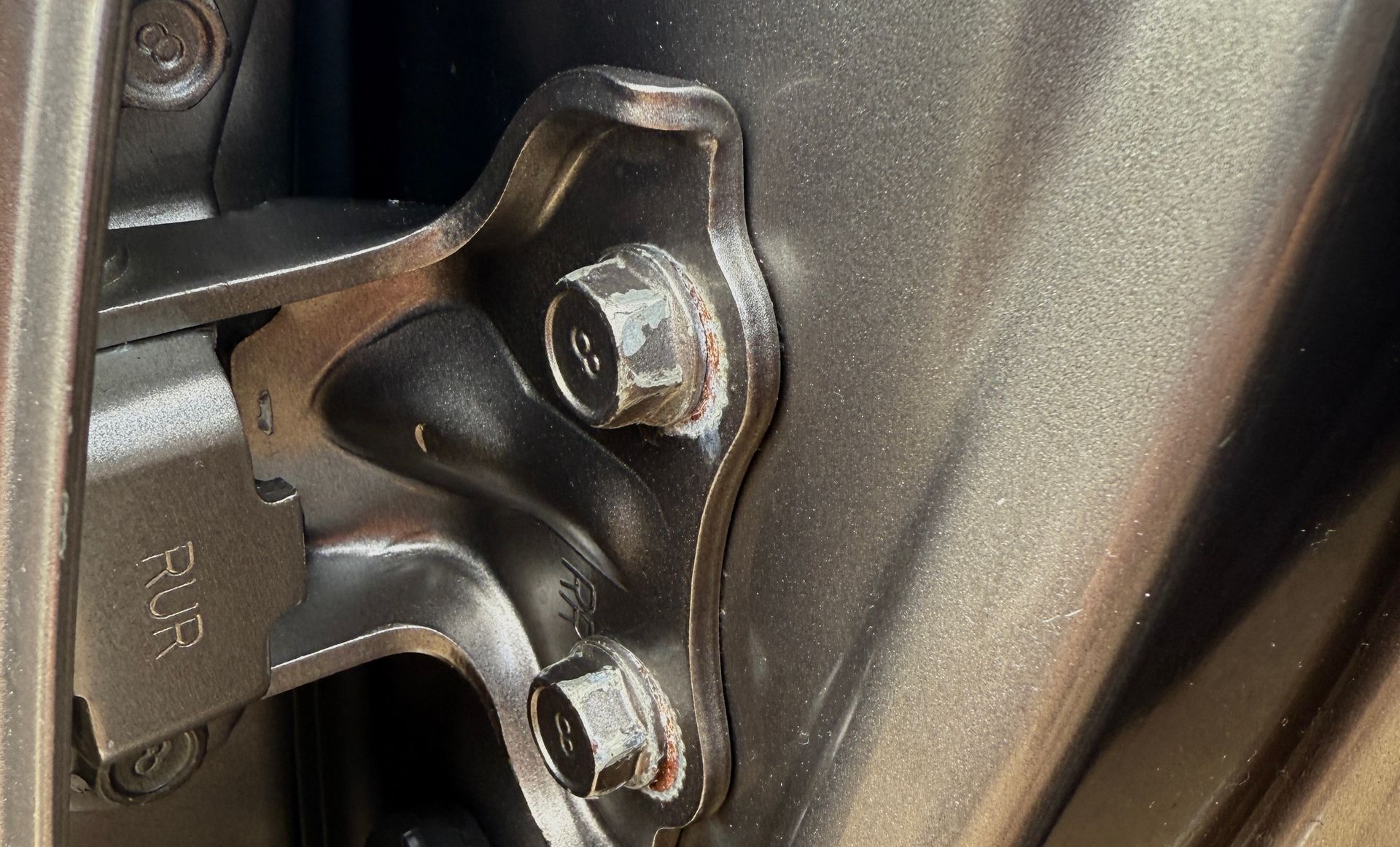Unmasking Hidden Damage: A Practical Guide To Inspecting Used Cars
Buying a used car? Most people focus on the logbook and the odometer, but some of the biggest red flags are physical—small clues that the car’s been in an accident or patched up.

I’ve been buying used cars for over a decade, and in that time, I’ve seen everything from backyard spray jobs to cars that looked perfect… until it hits the sun and you realise the colour is a little off. When you’ve looked at thousands of vehicles, you learn where the shortcuts are taken and what sellers try to hide — especially after a repair.
There are a few checks I never skip, no matter how clean the car looks on the surface. These aren’t just habits; they’re the difference between grabbing a solid car and ending up with a liability.
So here are the seven things I always inspect before deciding if a car’s worth buying — and why they matter.
1. Check the Panel Gaps
Walk around the car slowly and look at how the panels line up—doors, bonnet, boot, and guards. If one side has a tighter gap than the other, that’s not factory. It could mean the car’s been in a bingle and the panel was replaced or realigned poorly. Consistent panel gaps mean the frame is likely untouched.
2. Look for Paint Inconsistencies
Factory paint jobs are smooth and even. Resprays often leave signs behind, like:
- Orange peel texture (wavy or bumpy finish)
- Fish eyes (small craters from contaminants in the paint)
- Overspray (paint mist on rubber seals, badges, or under wheel arches)
Run your hand along the paintwork—if the texture changes between panels, it might’ve been touched up. Matte patches or dull clear coat can also point to repair jobs.
3. Inspect for Tape Lines and Paint Edges
Open the doors, bonnet, and boot, and run your fingers around the edges. If you feel a sharp line or see paint overlapping onto rubber seals or inside edges, that’s a masking line. It usually means someone taped it off for a repair instead of removing the panel completely—quicker and cheaper, but not factory.
4. Check for Paint Missing on Bolts
If a panel’s been removed, the bolts holding it in place might have chipped paint or visible tool marks. Bonnet bolts, door hinge bolts, and boot lid fasteners are a good giveaway. At the factory, these bolts are painted in place. If the paint’s flaked off, it’s probably been undone.

5. Look Underneath for Rust or New Undercoating
Crouch down or stick your phone under the car and take a photo with flash. Look for:
- Fresh undercoat (a thick black spray applied to hide rust or welds)
- Surface rust around welds or suspension points
- Dirt trapped under paint or strange textures under the sills
Also look at the spare wheel well—if it’s been wet, rusty or smells musty, it may have had water intrusion.
6. Tyres, Glass and Lights: Are They All Matching?
A car that’s been repaired in a rush often has mismatched parts:
- One tyre brand different to the rest
- A newer headlight or taillight on just one side
- Window glass with a different brand stamp or year
It’s not a guarantee something’s wrong, but it can hint that the car’s had a knock on one side.
7. Trust but Verify: Run a Full History Check
Even if it looks clean, always run a full history check. You’d be surprised how often a car with a clean exterior hides a written-off past. Look for:
- Previous insurance write-offs
- Odometer rollback
- Flood or hail damage
- Interstate re-registration (sometimes used to “clean” a record)
Frequently Asked Questions
How can I tell if a used car has been in an accident?
To determine if a used car has been in an accident, look for signs such as mismatched paint or panels, uneven gaps between body panels, and overspray on trim or rubber seals. These inconsistencies can indicate that the vehicle has undergone bodywork repairs.
Additionally, check for any signs of structural damage, such as welding marks or replaced parts, which may suggest previous collision repairs .
What are common signs of hidden damage in a used car?
Common indicators of hidden damage include:
- Uneven or inconsistent panel gaps
- Paint imperfections like orange peel texture or fish eyes
- Overspray on non-painted parts
- Paint lines indicating masking during repainting
- Chipped paint on bolts, suggesting parts have been removed
- Signs of rust or fresh undercoating underneath the car
- Mismatched tyres or uneven tire wear
These signs can point to previous repairs or damage that may not be immediately apparent.
Should I buy a used car that has been in an accident?
Purchasing a used car that has been in an accident can be acceptable if the repairs were done properly and the vehicle has been thoroughly inspected.
However, it's essential to verify the quality of the repairs and ensure there are no underlying issues. Be cautious of vehicles with salvage or rebuilt titles, as they may have sustained significant damage in the past.
Final Thoughts
Most used cars won’t come with a neon sign saying “I’ve been crashed.” It’s the little things — the misaligned panel, the rough paint edge, the bolt that’s been tampered with — that tell the real story.
If you’re buying a car, don’t rush it. Take your time, trust your instincts, and don’t be afraid to walk away if something feels off. You’re not just buying a car — you’re buying peace of mind.
And if you want to double-check what the eye might miss, run a full history check and book a pre-purchase inspection. It could save you thousands.
We Hope This Helps You Spot Hidden Damage in Your Next Car
If you're getting ready to buy, don’t forget to sell your old car first.
We make it easy — no roadworthy needed, fast payment, and no tyre-kickers.




